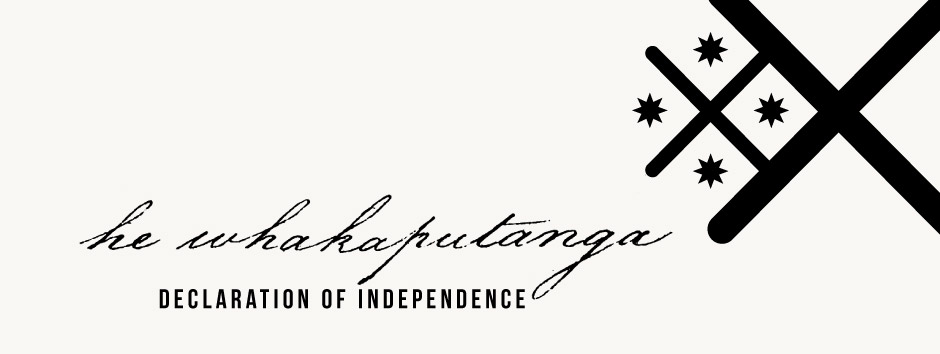Signing details
Te Ruki Kawiti was the principal rangatira of Ngāti Hine and a leader of considerable mana. He was born around the 1770s – his father was Hunā and his mother was Te Tāwai. With his first wife, Kawa, Kawiti had three sons: Taura, Wiremu Te Poro and Maihi Parāone Te Kuhanga. He had a daughter, Tuahine, with his second wife, Te Tiwha. Kawiti had settlements at Ōtūihu, Pūmanawa, Waiōmio, Taumārere, Ōrautā and Mangakāhia; his carved whare, Āhuareka, was at Waiōmio. He signed He Whakaputanga on 28 October 1835.
Known for his military expertise and fighting skills, Kawiti was given the nickname ‘The Duke’ (Te Ruki) by Europeans. As well as taking part in the battles of the 1820s and 1830s, he fought against the British during the 1845–46 Northern Wars after seeing Treaty promises repeatedly broken by the Crown. Indeed, he had been reluctant to sign the Treaty as he feared it would allow the British to take further Māori land. It was not until a special meeting with William Hobson in May 1840 that Kawiti agreed to sign (his name appears above the signatures of 6 February).
During the Northern Wars, Kawiti’s tactics played a pivotal role in Māori successes against the British, and included some of the first underground anti-artillery bunkers ever used in warfare. But he was also a peacemaker and orator – at the 1825 battle of Te Ika-a-Ranganui, Kawiti had taken a number of Ngāti Whātua under his care to protect them from Hongi Hika, and his takuate (lament) at Ruapekapeka in 1846 is now famous.
After the peacemaking that brought the northern wars to a close, Kawiti moved to Waiōnui and later to Pākaraka. He was thought to have been about eighty when he died at Waiōmio on 5 May 1854; his death was followed by a year-long tangi. He had advised his people to hold fast to the treasures of their ancestors, telling them to wait 'until the sandfly nips the pages of the book [the Treaty]; then you will rise and oppose.' [1] Descendants regard this as a warning to act when Treaty promises are not kept.
[1] Kene Hine Te Uira Martin, ‘Kawiti, Te Ruki’, from The Dictionary of New Zealand Biography, Te Ara – the Encyclopedia of New Zealand.


Community contributions